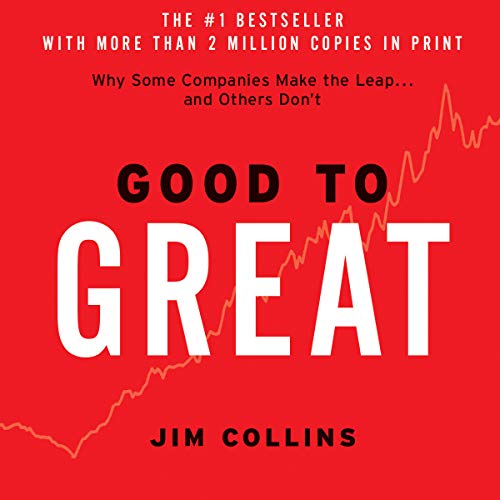“Good to Great” by Jim Collins is a compelling and insightful analysis of what transforms a good company into a great one. Collins and his team of researchers delve into years of data to uncover the defining characteristics that separate truly exceptional companies from the rest. This summary provides a concise overview of the key concepts, actionable steps, and critical insights presented in the book.
The Concept of Greatness in Business
In “Good to Great,” Jim Collins addresses the fundamental question of what makes a business not just survive, but thrive and achieve greatness. The book is grounded in extensive research, analyzing companies that made the leap to great results and sustained those results for at least fifteen years.
- Rigorous Research: Collins and his team analyzed over 1,400 companies, focusing on those that made substantial improvements in their performance over time.
- Sustained Excellence: The study centered on companies that not only achieved greatness but also maintained it over an extended period.
- Comparative Analysis: The research compared these companies to others that failed to make the leap or couldn’t sustain it, offering a clear contrast between success and mediocrity.
Level 5 Leadership
One of the key concepts introduced in “Good to Great” is Level 5 Leadership. Collins describes Level 5 leaders as a blend of humility and professional will, crucial for taking a company from good to great.
- Personal Humility: Level 5 leaders exhibit a blend of personal humility and professional will. They are more focused on the success of the organization than their personal gains.
- Professional Will: These leaders are incredibly driven for the company’s success, showing unwavering resolve to do whatever it takes to produce great results.
- Successor Success: Level 5 leaders set up their successors for success, unlike less effective leaders who often set up successors for failure.
The Hedgehog Concept
The Hedgehog Concept, based on an ancient Greek parable, is a principle that suggests that great companies understand their core competencies and stick to them, much like a hedgehog knows one big thing – rolling into a ball for protection.
- Simplicity within Complexity: The concept is about achieving clarity and focus, understanding what you can be best at, and sticking to it.
- Three Overlapping Circles: It involves understanding the intersection of what you can be the best in the world at, what drives your economic engine, and what you are deeply passionate about.
- Disciplined Thought and Action: Companies that adhere to the Hedgehog Concept are disciplined in their thought and action, not being distracted by new opportunities that don’t align with their core.
The Culture of Discipline
A culture of discipline is another crucial element for a company’s transformation from good to great. This involves a combination of disciplined people, disciplined thought, and disciplined action.
- Disciplined People: Great companies have disciplined people who engage in disciplined thought and take disciplined action.
- Freedom within Framework: These companies operate with a framework of responsibilities, giving people the freedom to work within this framework towards the company’s goals.
- Adherence to Core Values: Disciplined culture does not mean an oppressive environment but rather an adherence to core values and principles that guide all decisions and actions.
Technology as an Accelerator
Collins emphasizes that technology, by itself, doesn’t lead to greatness but can be an accelerator of momentum, not a creator of it.
- Selective with Technology: Great companies are selective with technologies they adopt, ensuring that any new technology fits directly with their Hedgehog Concept.
- Technology as a Supplement: Technology is used as a supplement to, not a replacement for, good business practices.
- Pioneering Technology Use: Sometimes, great companies become pioneers in the application of carefully selected technologies.
The Flywheel and the Doom Loop
The book concludes with the concept of the “Flywheel and the Doom Loop.” Companies that go from good to great don’t do so in one fell swoop but rather through the cumulative process of building momentum.
- The Flywheel Effect: This is a process of consistent, relentless pushing in one direction to build momentum over time.
- The Doom Loop: In contrast, companies that fail to make the transition often fall into the Doom Loop, where they repeatedly jump from strategy to strategy, failing to build sustained momentum.
- Consistency and Persistence: The key to the Flywheel Effect is consistency and persistence in following the company’s vision and strategy.
“Good to Great” by Jim Collins offers a comprehensive roadmap for organizations aspiring to make the leap from mediocrity to excellence. The book’s insights are backed by rigorous research and real-world examples, making it an invaluable resource for business leaders and professionals.

